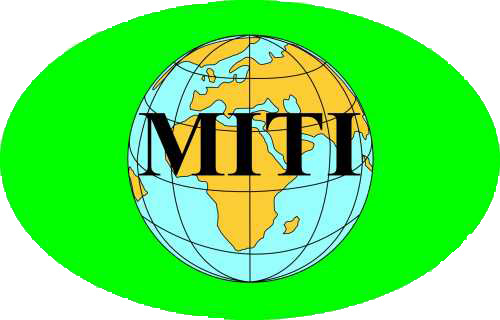
IncoNet CA Twinning Grants
Networking among Research Institutions
Using halophytic plants for alternative energy production and improving of land quality in saline areas of Central Asia
Summary
Energy is driving force of our life, it is essential for social development and economical growth. Energy supply is a crucial question for sustainability of world development. Exhaustibility of carbon energy sources (coal, oil, natural gas) is immediate cause to seek for new sources of energy. Renewable resources of energy have to replace the non-renewable ones in the longer term. Biomass has great potential as an energy source but is always in competition with nutrition and has to be balanced in respect to climate protection (CO2 sink). From that point of view one has to develop strategies, which cover different goals of sustainability at the same time.
Content of the project: “Halophytes for Biogas” is such a project: 1. Halophytes on saline soils in dessert areas act as CO2 sink, reduce the radiation reflection and minimize wind erosion preventing this way melting of glaciers in the mountains (climate protection), 2. Halophytes from saline soils in dessert areas could be the input of biogas reactors – if we are able to develop the prerequisites: suitable bacteria and innovative technical equipment – generating usable energy even in remote villages to increase the living standard in these regions (social equity), 3. Halophytes on saline soils in dessert areas pull out the salt from the soil so they have to be collected, the salt remains in the biogas residuals and after extraction of the salt the sludge will be used as organic fertilizers to improve the soil quality on site (carbon cycle and carbon enrichment). This strategy is the main content of this project under consideration.
The prerequisites of the project are: 1. The German partners together with the partners from Central Asia, especially with the Uzbek partners, are running already a BMBF-Project (BioGasHalo; 01DK14006, 20140701 till 20160630) to consider the feasibilities mentioned above. A first paper is submitted for publication. A Memorandum of Understanding (2014,12,18) is signed. 2. The Uzbek partners are already in close contact to cooperate, they developed the terms of mutual cooperation.
The goal of the project: The project is dedicated to exploration of halophyte biomass for biogas production and assessment of some widespread halophytes as energy plants in case of Central Asia. It is suggested to develop a reference object using halophytic biomass (unusable and inedible) as renewable feedstock for alternative energy production, for autonomic biogas production in remote desert areas of Central Asia particularly. It should be a promissory idea from economical, technical, environmental as well as social point of view.
The main goal of the project is to work out a perfect application for grants from different sponsors . On the basis of this reference object the consortium will marketing the results via licences to related areas in the world.
Background and objectives
Background: More than half of irrigated lands of Uzbekistan, of Kyrgyzstan and other Central Asia countries are salt-effected, their productivity is being decreased or almost lost; that’s why they are being eliminated from agricultural use and becoming abandoned. Halophytes unlike conventional plants are able to develop and produce good yield in saline environment; besides, it is known that it is possible to meliorate/improve saline soils by means of cultivation of certain salt-accumulating plants. Thus cultivation of halophytic plants in marginal (saline) environment could bring multiple positive effects to local communities –
And one more important advantage should be noted – there is no any competition for land or water use between conventional profitable crops and salt tolerant plants in saline environment. It is important to use fertile lands for food or fodder production. Alternatively, marginal resources (saline lands and mineralised water) could be used to cultivate plants for energy. Halophytes and salt-tolerant plants can be grown in salt-affected, degraded and abandoned unproductive lands.
There is a lot of important questions: How to introduce halophytes into current agricultural system? How to cultivate halophytes? What kind of halophytes could be used? How to use halophytic biomass sustainable etc.
Halophytic biomasses could be used in different ways because most of them are multipurpose plants. Some halophytes can be used for food, fodder, or forage production in marginal environments. There are a number of annual and perennial species among halophytes that are able to uptake significant amounts of salts in biomass and remove them from saline soils. In other words, cultivation and sustainable utilization of wild or domesticated halophytic and salt-tolerant plants could play an important role for salinity control, remediation of saline lands and improvement of livelihoods of rural communities in Central Asian region. In addition, halophytes may be useful as sources of biogas.
But the usual methods for biogas production should be modified because the minerals in halophytes are toxic for the common microbes and the technical equipment should be modified in order to protect it from corrosion.
There is another problem to be solved. There is no fresh water In the regions of interest to extract the halogen compounds from the biogas residuals in order to use the residuals as organic fertilizers. Generating electrical energy one could pump the natural ground water and use the energy for desalination. But there are innovative solutions in preparation to desalinate (the chlorines only) using pure sun radiation. (Patents in preparation.)
Objectives:
- Objectives for the overall project:
- Selection of relevant halophytes for given areas.
- Cultivation of relevant halophytes for given areas.
- To examine the feasibility of use of non-conventional water sources (hot artesian saline ground water, saline lake water) to irrigate halophytic crops on marginal soils.
- To characterize growth, yield, and salt uptake rates of several (widely distributed in Uzbekistan, Kyrgyzstan and other Central Asia countries) species of halophytes.
- To study chemical composition of halophytic plant biomass.
- To study mechanisms of adaptation to saline environment of different species of halophytes;
- Multi purpose using of halophytes in given areas and developing of technologies to prepare and to operate the raw material (plants for energy, plants for nutrition, plants for feeding, plants as renewable material, plants for pharmacy etc.).
- To study the possibilities of anaerobic digestion (AD) of different halophytes for methane-gas production and to determine the optimum process and design parameters;
- Selection of suitable bacteria and development of relevant breeding methods.
- Development of suitable biogas reactors to use halophytes.
- Development of methods to extract chlorine compounds and other toxic minerals from biogas residuls to use them as organic fertilizers for soil improvement.
- To investigate the effect of humus reproduction via AD and appropriate treatment of the AD-residues (e.g. dewatering and drying using waste heat of the CHP with simultaneous production of AD-compost, potable water and brine);
- To select more promising halophytic plants for land desalination and energy production taking into consideration their distribution, biomass production per hectare, methane yield and cultivation techniques.
- To educate undergraduate and graduate students and post-doctoral associates in interdisciplinary techniques for studying halophytes, biogas production; and plant/land/water interactions in relation to salt accumulation/removing.
- Development of infrastructure systems for autarkic villages in remote areas under new conditions to increase living standards (electricity, fresh water, communication systems (tv, radio, phone), medical service (incl. telemedicine systems), edication, qualification etc.. (All prerequisites are available).
- To errect at least one reference object in a remote village including all mentioned results.
- To start marketing the results of the reference object in other relevant areas.
- Objectives for a preparation meeting:
- To discuss the objectives listed above.
- To sort and to classify the objectives above in a list of priorities
- To discuss and to realize the abilities and the prerequisites of each partner in detail in order to work out a plan of cooperation including binding commitments of each partner.
- To identify and to attract national authoreties of each country and international authorities to support the basic idea and to take part in the financial support of individual steps of the project and – if possible – the whole project.
- To identify and to include small and medium sized companies in each country to get interested in the project, to take over industrial work on site in each country and to get interested in taking part to erect the reference objects in Uzbekistan, in Kyrgyzstan and may be in other Central Asia countries as well. (First official bodies are already informed and offered their principal interest. In Uzbekistan: the company “MirSolar”, Tashkent, and the Association “Physics – Sun”, Tashkent. In Kyrgyzstan: The Ministry of Energy and Economy and the National State Technical University (KSTU), German-Kyrgyz Competence Center for Welding and Materials Technology (DKZ)).
- To discuss and to work out plans for university education of young people and for qualification of specialists in Uzbekistan, in Kyrgyzstan and in other Central Asia countries to prepare qualified personal to take part in the project and to run the reference objects.
Outcomes:
Outcomes of the overall project:
- Installation of reference objects in remote villages in Uzbekistan, in Kyrgystan and in other Central Asia countries containing most of the components mentioned in the objectives.
- Plan for marketing the results of the given project in relevant third regions.
Outcomes of a preparation meeting
- Plan containing milestones on the way to the reference objects in Uzbekistan in Kyrgyzstan and in other Central Asia countries.
- Plan containing binding commitments of all partners.
- Basics for an application for grants preferable in the framework of Horizon 2020, but applications incorporated in national programs should be possible, too.
